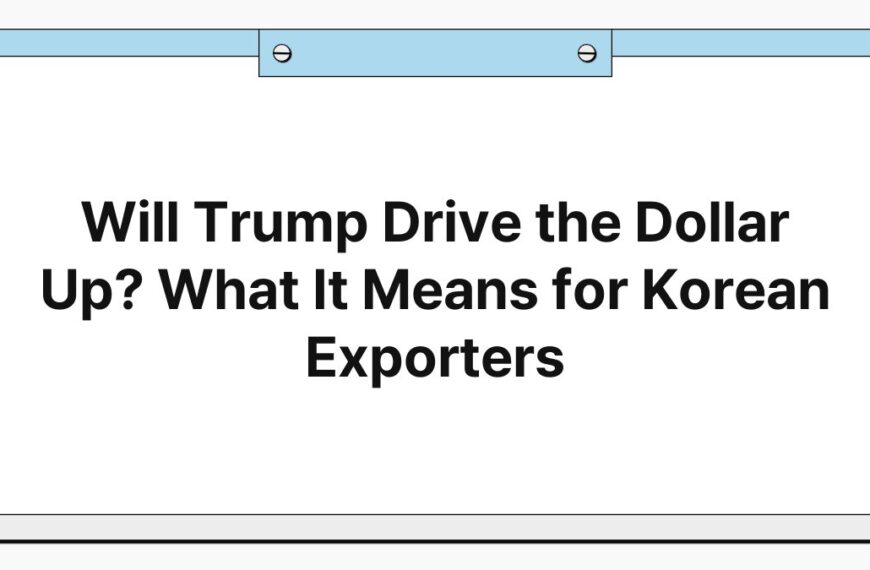[K-Bridge/Samuel] Preparing for inflation in 2025 involves understanding the economic landscape and taking proactive measures to safeguard personal finances and national economies.
As inflation rates rise, the purchasing power of money diminishes, leading to increased costs of living.
It is essential for individuals and governments to prepare strategies that can mitigate the effects of inflation, ensuring financial stability and economic growth.
This article will explore various strategies and actions that you and your country can implement to effectively prepare for inflation in 2025, including personal finance management, investment strategies, government policies, and community initiatives.
Understanding Inflation: Causes and Effects
What is Inflation?
Inflation refers to the rate at which the general level of prices for goods and services rises, eroding purchasing power.
It is measured by the Consumer Price Index (CPI) and can be influenced by various factors, including demand-pull inflation, cost-push inflation, and built-in inflation.
Demand-pull inflation occurs when demand for goods and services exceeds supply, leading to price increases.
Cost-push inflation happens when production costs rise, causing businesses to pass on those costs to consumers.
Built-in inflation is linked to adaptive expectations, where businesses and workers expect prices to rise and adjust wages and prices accordingly.
Historical Context of Inflation
Historically, inflation has been a recurring phenomenon in economies worldwide.
For instance, the hyperinflation experienced in Germany during the 1920s serves as a stark reminder of how rapidly inflation can spiral out of control.
More recent examples include the inflation spikes in the 1970s in the United States, driven by oil crises and economic policies.
Understanding these historical contexts allows individuals and policymakers to recognize patterns and prepare for potential inflationary pressures in the future.
The Impact of Inflation on Daily Life
Inflation affects various aspects of daily life, from the cost of groceries to housing prices.
As inflation rises, consumers may find themselves spending more on essential goods and services, leading to a decrease in disposable income.
This can affect savings rates, investment decisions, and overall economic confidence.
Additionally, inflation can lead to wage stagnation if salaries do not keep pace with rising prices, further straining household budgets.
Recognizing these impacts is crucial for developing effective strategies to combat inflation.
Personal Finance Strategies for Inflation in 2025
Budgeting for Inflation
Creating a comprehensive budget is vital for managing personal finances in an inflationary environment.
This involves tracking income and expenses while adjusting for anticipated price increases.
By identifying discretionary spending areas, individuals can prioritize essential expenses and allocate funds more effectively.
Regularly revisiting and updating the budget ensures that it remains relevant and responsive to changing economic conditions.
Additionally, incorporating inflation projections into budgeting can help individuals prepare for inevitable cost increases.
Building an Emergency Fund
An emergency fund serves as a financial safety net during uncertain times, especially amid rising inflation.
Ideally, this fund should cover three to six months’ worth of living expenses, allowing individuals to navigate unexpected financial challenges without resorting to high-interest debt.
As inflation erodes purchasing power, having a robust emergency fund becomes even more critical, providing peace of mind and financial security.
Regular contributions to this fund, even in small amounts, can accumulate over time and offer a cushion against inflationary pressures.
Diversifying Investments
Investing in a diversified portfolio can help individuals protect their wealth from inflation.
Inflation can erode the value of cash holdings, making it essential to explore various asset classes.
Real estate, stocks, and commodities often serve as effective hedges against inflation, as their values tend to rise with increasing prices.
By diversifying investments across different sectors and asset types, individuals can mitigate risks and enhance potential returns.
Regularly reviewing and adjusting investment strategies in response to inflationary trends is crucial for maintaining financial health.
Government Policies to Combat Inflation
Monetary Policy Adjustments
Governments play a crucial role in managing inflation through monetary policy.
Central banks can adjust interest rates to influence economic activity and inflation rates.
Raising interest rates can help curb inflation by reducing borrowing and spending, while lowering rates can stimulate economic growth.
Policymakers must carefully balance these adjustments to avoid triggering recessionary pressures while addressing inflation concerns.
Effective communication of monetary policy strategies is essential for maintaining public confidence and economic stability.
Fiscal Policy Initiatives
Fiscal policies, including government spending and taxation, also impact inflation.
By adjusting tax rates or increasing public spending, governments can influence aggregate demand and economic growth.
For instance, targeted fiscal stimulus can support sectors most affected by inflation, helping to stabilize prices.
However, excessive government spending can exacerbate inflationary pressures, necessitating a careful approach to fiscal policy design.
Collaboration between government agencies and economic experts can lead to more effective fiscal strategies.
Regulatory Measures
Implementing regulatory measures can help control inflation by promoting competition and preventing price gouging.
Governments can monitor industries prone to monopolistic practices, ensuring fair pricing for consumers.
Additionally, regulatory frameworks can support innovation and efficiency, ultimately leading to lower production costs.
By fostering a competitive marketplace, governments can help mitigate the effects of inflation on consumers and businesses alike.
Community Initiatives for Inflation Resilience
Encouraging Local Production
Promoting local production can enhance community resilience against inflation.
By supporting local businesses and farmers, communities can reduce reliance on imported goods, which are often subject to price fluctuations.
Local production not only bolsters the economy but also fosters a sense of community and sustainability.
Initiatives such as farmers’ markets and local cooperatives can encourage residents to buy locally, thereby stabilizing prices and enhancing food security.
Financial Literacy Programs
Enhancing financial literacy within communities is essential for preparing for inflation.
Educational programs focused on budgeting, saving, and investing can empower individuals to make informed financial decisions.
By equipping residents with knowledge and skills, communities can foster a culture of financial responsibility and resilience.
Workshops, seminars, and online resources can provide valuable information on managing finances in an inflationary environment.
Collaborative Community Efforts
Collaboration among community members can lead to innovative solutions for combating inflation.
Initiatives such as community gardens or cooperative purchasing groups can help reduce costs and enhance food security.
By pooling resources and sharing knowledge, communities can develop strategies to mitigate the impacts of inflation collectively.
These collaborative efforts can foster social cohesion and resilience, ensuring that communities are better equipped to face economic challenges.
The Role of Technology in Inflation Preparedness
Digital Financial Tools
Advancements in technology have introduced various digital financial tools that can aid individuals in preparing for inflation.
Budgeting apps and investment platforms allow users to track expenses, manage investments, and access financial advice conveniently.
These tools can help individuals make informed decisions and adapt their financial strategies in response to inflationary pressures.
Embracing technology can enhance financial literacy and empower individuals to take control of their finances.
E-commerce and Price Comparison
The rise of e-commerce has transformed the way consumers shop, providing opportunities to compare prices and find the best deals.
Online platforms allow individuals to access a wider range of products and services, often at competitive prices.
By leveraging technology to research and compare prices, consumers can make informed purchasing decisions, mitigating the impact of inflation on their budgets.
This shift toward digital shopping can encourage price transparency and competition among retailers.
Data Analytics for Economic Insights
Data analytics can provide valuable insights into inflation trends and consumer behavior.
By analyzing economic data, businesses and policymakers can identify patterns and make informed decisions to address inflationary pressures.
Predictive analytics can help forecast price changes, enabling individuals and organizations to adjust their strategies proactively.
Embracing data-driven approaches can enhance preparedness for inflation and support effective economic planning.
Preparing for Global Inflation Trends
Understanding Global Economic Interconnections
Inflation is not confined to national borders; it is influenced by global economic trends and events.
Understanding these interconnections is crucial for individuals and governments alike.
Factors such as international trade, commodity prices, and geopolitical tensions can significantly impact domestic inflation rates.
By staying informed about global economic developments, individuals can better anticipate potential inflationary pressures and adjust their financial strategies accordingly.
Adapting to Supply Chain Disruptions
Supply chain disruptions can contribute to inflation by causing shortages and driving up prices.
Individuals and businesses must be prepared to adapt to these challenges by diversifying supply sources and exploring alternative products.
Building relationships with local suppliers can enhance resilience and reduce dependence on global supply chains.
By fostering flexibility and adaptability, individuals and organizations can navigate inflationary pressures more effectively.
Monitoring Currency Fluctuations
Currency fluctuations can also influence inflation rates, particularly in countries reliant on imports.
Monitoring exchange rates and understanding their impact on purchasing power is essential for individuals and businesses.
Strategies such as currency hedging can help mitigate risks associated with currency volatility.
By staying informed about global currency trends, individuals can make more informed decisions regarding international purchases and investments.
Conclusion: Taking Action Against Inflation
Preparing for inflation in 2025 requires a multifaceted approach that involves individuals, governments, and communities.
By understanding the causes and effects of inflation, individuals can implement effective personal finance strategies, such as budgeting, building emergency funds, and diversifying investments.
Governments play a crucial role in managing inflation through monetary and fiscal policies, while community initiatives can foster resilience and collaboration.
Embracing technology and understanding global economic trends further enhances preparedness for inflation.
Ultimately, proactive measures and informed decision-making are essential for navigating the challenges posed by inflation.
By taking action today, individuals and communities can safeguard their financial futures and contribute to a more stable economic environment.








